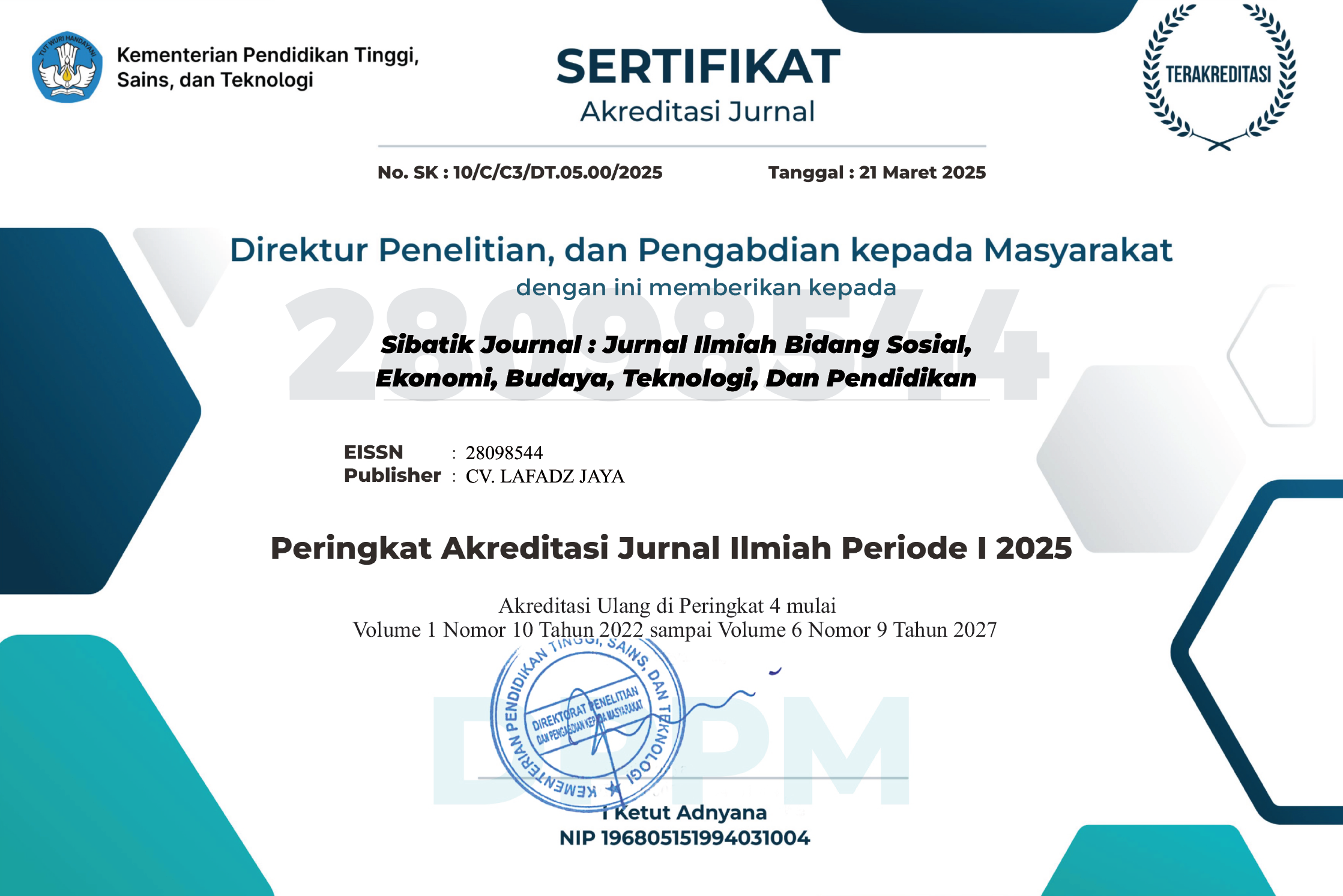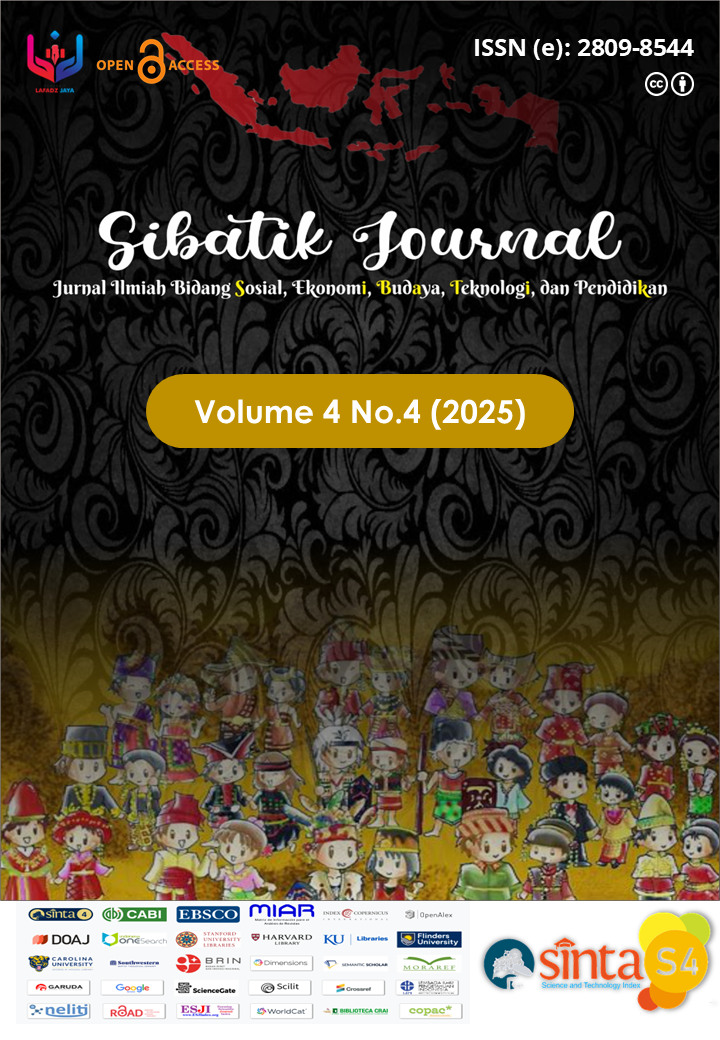CYBERSECURITY DAN PERLINDUNGAN DATA DALAM SISTEM PERPAJAKAN DIGITAL
Main Article Content
Fittry Megasari Sijabat
Gunawan Widjaja
Advances in digital technology have driven the transformation of the taxation system to be more efficient and timely, but they have also created new challenges in terms of cybersecurity and data protection. Digital taxation systems manage large amounts of sensitive data, including taxpayers' personal and financial information, which is a potential target for cyberattacks. This study discusses important measures that need to be implemented to ensure the security and integrity of data in digital taxation systems. These measures include the implementation of encryption technology, strict access control, routine security audits, and security awareness training for staff. A holistic approach and collaboration with technology experts are the main keys to maintaining a secure and reliable taxation system, while maximising the benefits of digitalisation. With these steps, the risk of cyber threats can be minimised, so that the integrity and public trust in the digital taxation system is maintained.
Ahmad, A., Maynard, S. B., & Park, S. (2014). Information security strategies: Towards an organizational multi-strategy perspective. Journal of Intelligent Manufacturing, 25(2), 357–370.
Anderson, R. (2020). Security Engineering: A Guide to Building Dependable Distributed Systems. Wiley.
Beasley, M. (2025). Managing Cyber Risks in Digital Tax Filing. Journal of Tax Filing, 13(6), 276–293. https://doi.org/10.3214/jtf.2025.mnopqr
Brown, A. (2023). Evaluating Data Protection Impact Assessments in Tax Systems. Data Privacy Journal, 9(4), 178–193. https://doi.org/10.2345/dpj.2023.rstuvw
Chen, H. (2025). Advanced Encryption Techniques for Tax Data. Journal of Cryptography in Tax, 5(8), 315–331. https://doi.org/10.6655/jct.2025.qrstuv
Galvan, J. L., & Galvan, M. C. (2017). Writing Literature Reviews: A Guide for Students of the Social and Behavioral Sciences (7th ed.). Routledge.
Garcia, I. (2022). Protecting Sensitive Taxpayer Data. Tax Data Security Review, 8(4), 161–178. https://doi.org/10.2235/tdsr.2022.stuvwx
Gomez, E., & Fernandez, C. (2024). Understanding Cyber Threats in Tax Administration. Journal of Cyber Defense, 9(3), 142–160. https://doi.org/10.7890/jcd.2024.mnopqr
Green, B. N., Johnson, C. D., & Adams, A. (2006). Writing Narrative Literature Reviews for Peer-Reviewed Journals: Secrets of the Trade. Journal of Chiropractic Medicine, 5(3), 101–117.
Kim, S., & Lee, J. (2023). Innovations in Data Security for Tax Administrations. Journal of Tax Innovations, 11(5), 305–321. https://doi.org/10.1357/jti.2023.yzabcd
Lee, C., & Wong, P. (2022). Cyber Insurance for Tax Data Breaches. Journal of Insurance and Cybersecurity, 9(2), 245–261. https://doi.org/10.9987/jic.2022.wxyzab
Murphy, J. (2024). Addressing Cyber Incidents in Digital Tax Systems. Journal of Digital Incident Management, 7(1), 12–27. https://doi.org/10.6789/jdim.2024.lmnopq
Mustafa, Z. (2024). Securing Cloud Infrastructure for Tax Systems. Journal of Cloud Security, 11(5), 189–206. https://doi.org/10.4567/jcs.2024.abcdef
O’Connor, F. (2022). Cybersecurity Frameworks for Tax Administration. Journal of Cyber Policy, 5(6), 430–445. https://doi.org/10.5432/jcp.2022.klmnop
OECD. (2020). Tax Administration 3.0: The Digital Transformation of Tax Administration.
Oliveira, R. (2023). Cyber Incident Response in Tax Agencies. Journal of Incident Response, 10(1), 98–115. https://doi.org/10.1235/jir.2023.ghijkl
Patel, R. (2022). Cybersecurity Measures in Digital Tax Collection. Tax Technology Review, 6(2), 77–95. https://doi.org/10.1234/ttr.2022.stuvwx
Rao, N. (2025). Secure Data Exchange Protocols in Digital Tax Systems. Journal of Secure Protocols, 10(7), 299–315. https://doi.org/10.4456/jsp.2025.cdefgh
Schneier, B. (2015). Data and Goliath: The Hidden Battles to Collect Your Data and Control Your World. W.W. Norton & Company.
Sharma, R., & Patel, S. (2023). Cybersecurity Training for Tax Officials. Journal of Digital Training, 6(3), 88–105. https://doi.org/10.3344/jdt.2023.hijklm
Silva, L., & Martinez, A. (2024). Digital Identity Solutions in Secure Tax Systems. International Journal of Secure Identity, 14(3), 226–242. https://doi.org/10.3579/ijsi.2024.qrstuv
Singh, A., & Kumar, R. (2025). The Role of Blockchain in Enhancing Tax Security. International Journal of Blockchain Applications, 8(2), 45–63. https://doi.org/10.1597/ijba.2025.efghij
Smith, J., & Johnson, M. (2023). Advancements in Cybersecurity for Digital Tax Systems. Journal of Digital Security, 12(4), 255–270. https://doi.org/10.1234/jds.2023.abcdef
Stallings, W., & Brown, L. (2012). Computer Security: Principles and Practice. Pearson.
Taylor, E. (2023). Privacy Enhancing Technologies in Tax Systems. Journal of Privacy Technologies, 7(4), 123–139. https://doi.org/10.2348/jpt.2023.rstuvw
Torraco, R. J. (2005). Writing Integrative Literature Reviews: Guidelines and Examples. Human Resource Development Review, 4(3), 356–367.
Von Solms, R., & Van Niekerk, J. (2013). From information security to cyber security. Computers & Security, 38, 97–102.
Weber, T. (2023). The Impact of AI on Cybersecurity in Tax Collection. Journal of AI and Security, 13(9), 359–375. https://doi.org/10.8765/jais.2023.wxyzab
Williams, D. (2024). Risk Management in Digital Tax Systems. Journal of Digital Risk Management, 12(2), 233–249. https://doi.org/10.1123/jdrm.2024.klmnop
World Bank. (2018). Digital Dividends: Strengthening Cybersecurity in the Digital Age.

























